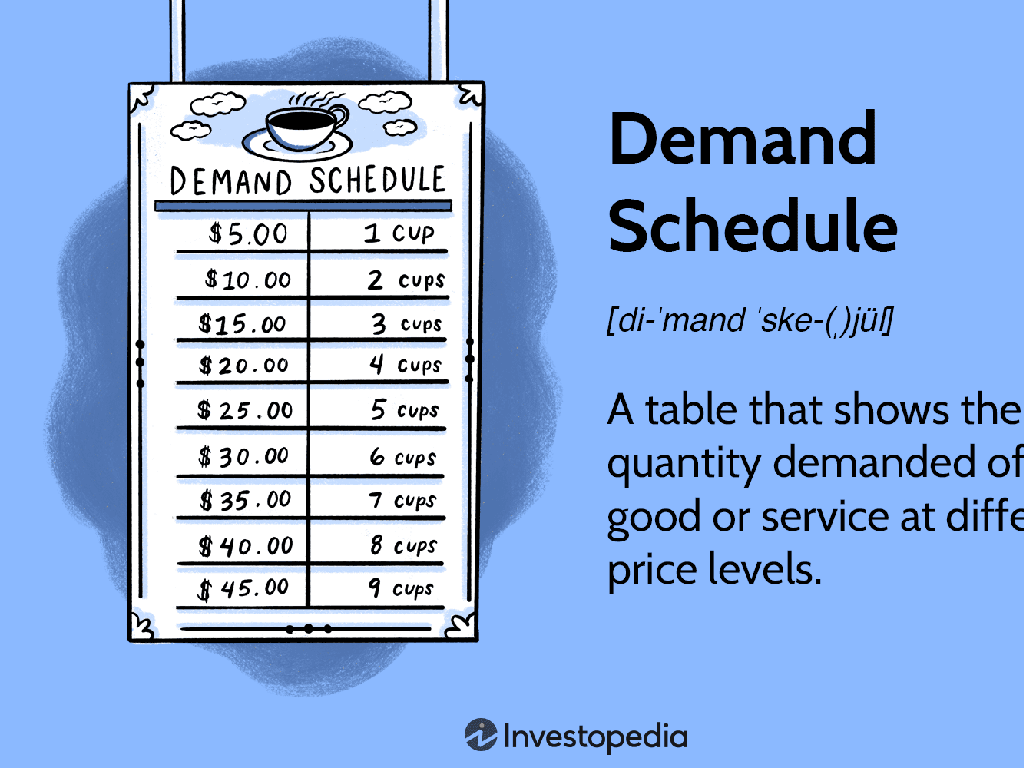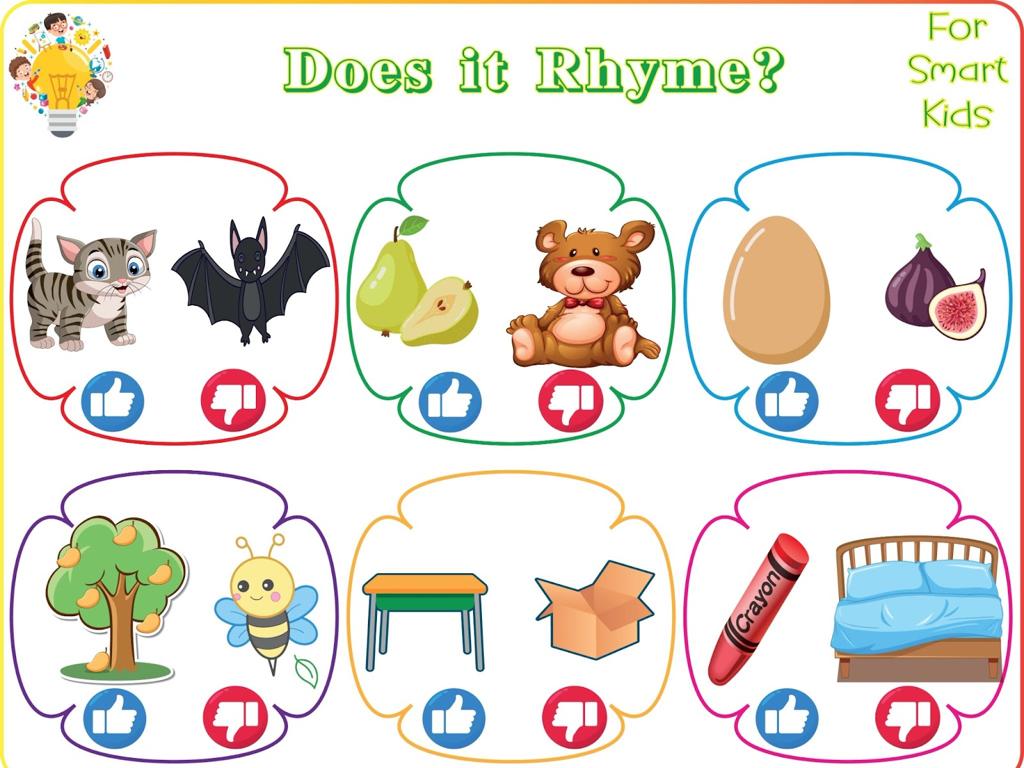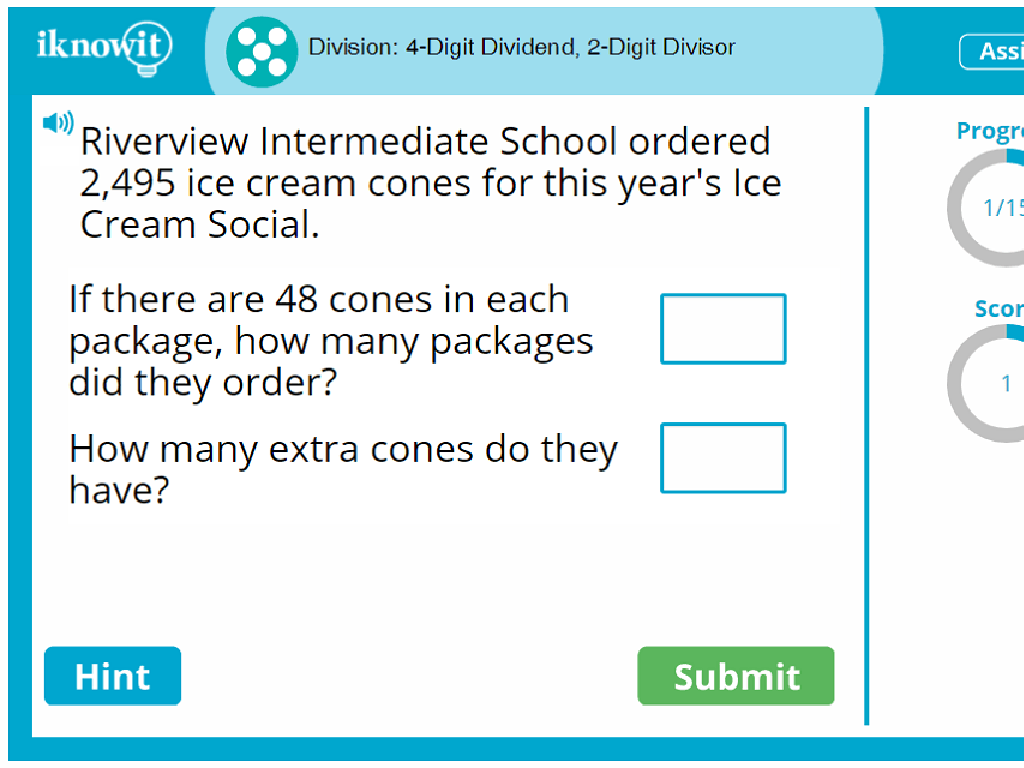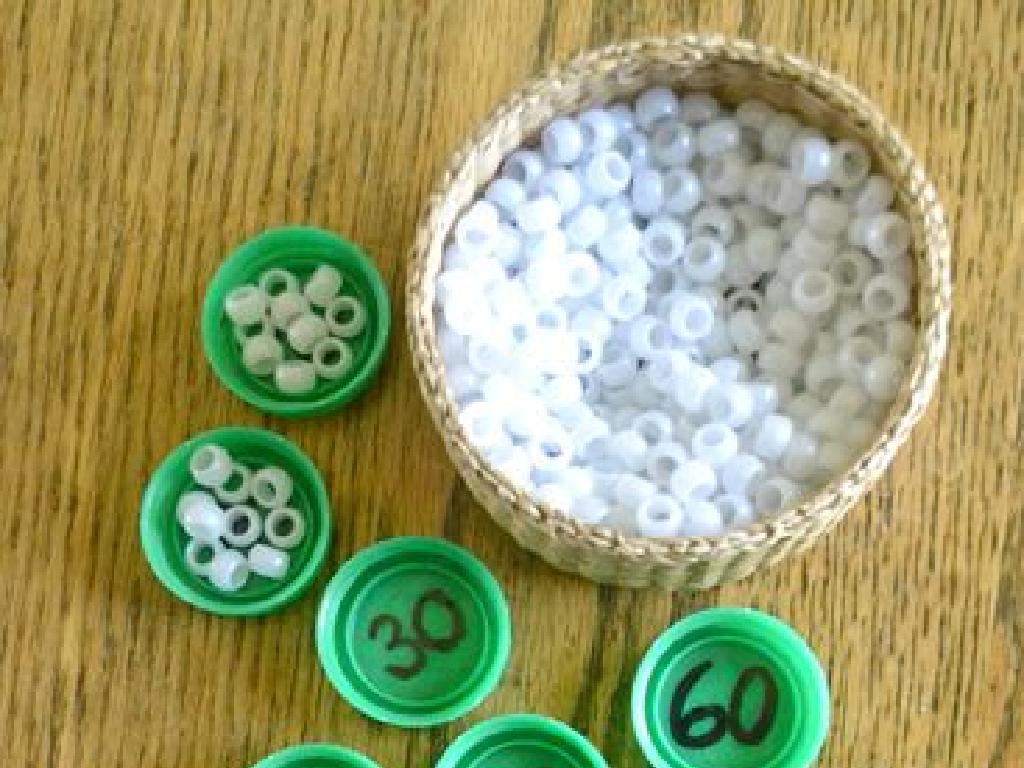Multiplication Facts Up To 10: Sorting
Subject: Math
Grade: Third grade
Topic: Multiplication Fluency Up To 10
Please LOG IN to download the presentation. Access is available to registered users only.
View More Content
Welcome to Multiplication Mastery!
– Learn to multiply numbers up to 10
– We’ll practice multiplying numbers 1 through 10
– Discover patterns in multiplication
– Look for patterns like 5s and 10s to make multiplying easier
– Understand multiplication’s daily use
– Multiplication helps in situations like counting items or dividing things evenly
– Become a multiplication master
|
This slide is designed to introduce third-grade students to the concept of multiplication, focusing on numbers up to 10. Start by explaining that multiplication is a faster way of adding the same number several times. Show them how multiplication is not just a math skill but a tool we use in everyday life, such as when we need to count groups of items quickly or divide things evenly among people. Encourage the students to look for and use patterns to make multiplication easier, such as the pattern that any number multiplied by 10 ends in zero. By the end of the lesson, aim for the students to feel more confident in their ability to multiply and to understand why it’s a valuable skill to have.
Understanding Multiplication
– Multiplication as repeated addition
– It’s like adding 2 + 2 + 2, which equals 6.
– Example with groups of apples
– Imagine 3 baskets, each with 2 apples inside.
– Multiplication expression: 3 x 2
– This is how we write ‘3 groups of 2’ mathematically.
– Finding the total using multiplication
– Multiply 3 times 2 to see we have 6 apples in total.
|
This slide introduces the concept of multiplication as repeated addition, which is a foundational skill in third-grade math. Use the example of apples to visually demonstrate how grouping objects and then adding them repeatedly is the same as multiplying. Show that 3 groups of 2 apples can be expressed as 3 x 2, and when we multiply, we find the total number of apples quickly. Encourage students to visualize the groups and use real-life examples to solidify their understanding. In the next class, students can practice with different numbers of groups and objects to become fluent in multiplication facts up to 10.
Mastering Multiplication Facts
– Memorization speeds up problem-solving
– Explore the multiplication chart
– A visual tool to help us learn and remember
– Locate 5 x 6 on the chart
– Helps us see patterns in numbers
– Practice finding other products
– Try to find more answers on your own!
|
This slide is aimed at helping students understand the importance of memorizing multiplication facts to enhance their problem-solving skills. Introduce the multiplication chart as a visual aid that can help them quickly find answers to multiplication questions. Encourage the students to find the product of 5 x 6 on the chart to demonstrate how the chart works. Afterward, ask them to practice with other multiplication facts to reinforce their learning. The goal is to build their confidence in using the chart and to recognize patterns that make multiplication easier. Provide guidance on how to use the chart effectively and encourage students to practice regularly.
Sorting Multiplication Facts
– Why sorting helps in multiplication
Sorting organizes facts for easier recall.
– Grouping facts by product
Facts with the same result are in one group.
– Sorting facts for product 12
Example: 3×4, 2×6 both equal 12.
– Practice sorting with different products
|
This slide introduces the concept of sorting as a method to organize multiplication facts, making them easier to remember. By grouping facts that result in the same product, students can more efficiently recall their multiplication tables. For instance, both 3×4 and 2×6 equal 12, so they belong in the same group. Encourage students to practice sorting other multiplication facts by their products. This activity can be turned into a game where students race to group facts, or work in teams to sort a set of multiplication flashcards. The goal is to build fluency and speed in recognizing products of multiplication facts up to 10.
Exploring Patterns in Multiplication
– Observe multiplication table patterns
– Patterns aid fact memorization
– Multiplying by 5 patterns
– Every product ends with 0 or 5 when we multiply by 5
– Practice with examples
– Example: 5×2=10, 5×4=20, notice the pattern?
|
This slide is aimed at helping students recognize and use patterns to improve their multiplication fluency. Start by asking students to look at the multiplication table and observe any patterns they see, especially when multiplying by 5. Explain that these patterns can make it easier to remember multiplication facts. For instance, when we multiply any number by 5, the product always ends in either 0 or 5. Provide several examples and ask students to come up with their own. Encourage them to explain the patterns they notice. This interactive approach helps solidify their understanding of multiplication facts and prepares them for more complex math concepts.
Let’s Practice Multiplication!
– Solve 4 x 7 together
– Use objects for counting
– Use items like blocks or beads to represent groups of 4, make 7 groups
– Count carefully
– Check your work
– Double-check by recounting each group
|
This slide is designed for an interactive class activity to practice multiplication. Start by presenting the problem 4 x 7 to the class. Encourage the students to visualize the problem by using physical objects such as blocks or beads. Have them group the objects into 7 groups of 4. This hands-on activity helps solidify the concept of multiplication as repeated addition. Remind the students to count each group carefully to ensure accuracy. After they have counted, ask them to check their work by recounting or using another method, like adding 4 seven times. This reinforces the idea of multiplication and checking work for accuracy. For the activity, you can have different sets of objects ready for students to use, and perhaps even turn it into a small competition to see who can solve the problem correctly first.
Multiplication Games: Sorting Fun
– Games make multiplication exciting
– Practice sorting with a game
– We’ll sort multiplication facts into groups
– Match problems to products
– Find the product for problems like 3×4, 2×5
– Get set for a multiplication challenge
– Ready your math skills for a fun game
|
This slide introduces a playful approach to learning multiplication facts through games. The objective is to reinforce the students’ ability to quickly and accurately match multiplication problems with their correct products. The game will involve sorting different multiplication facts, which helps in enhancing their fluency. Prepare a variety of multiplication problems and their corresponding products on cards for the students to match. Consider creating different levels of difficulty to cater to varying skill levels within the class. Encourage students to work in pairs or small groups to foster teamwork and peer learning. The game should be engaging and competitive, with a focus on reinforcing the students’ understanding of multiplication facts up to 10.
Class Activity: Multiplication Fact Sort
– It’s your turn to sort multiplication facts!
– You will receive cards with multiplication problems.
– Sort cards into groups with the same answer.
– For example, 2×5 and 1×10 both equal 10, so they go together.
– See how quickly you can find matches!
|
This activity is designed to reinforce the concept of multiplication by having students actively sort cards with multiplication problems into groups based on the product. Distribute the cards evenly among the students. Encourage them to use mental math to find the product of each multiplication problem. Once they calculate the answers, they should group cards with the same product together. This exercise will help them see the relationships between different multiplication facts and understand the concept of commutative property in multiplication. Possible variations of the activity could include timing the students to add a competitive element, working in pairs or small groups to foster collaboration, or challenging them to find the most unique grouping based on the products.
Conclusion: Multiplication Mastery
– Celebrate your sorting success
– Practice leads to perfection
– Continue practicing at home
– Use flashcards, games, or worksheets for extra fun
– Reviewing strengthens memory
– Go over today’s sorted facts and try to recall them
|
As we wrap up today’s lesson on sorting multiplication facts, it’s important to acknowledge the students’ hard work and progress. Emphasize the value of consistent practice to improve their multiplication fluency. Encourage them to engage in fun activities at home like using flashcards, playing multiplication games, or completing worksheets to reinforce their learning. Remind them to review the facts they sorted today to help cement the information in their memory. Offer praise and support, and let them know that with each practice session, they are getting closer to becoming multiplication masters.






